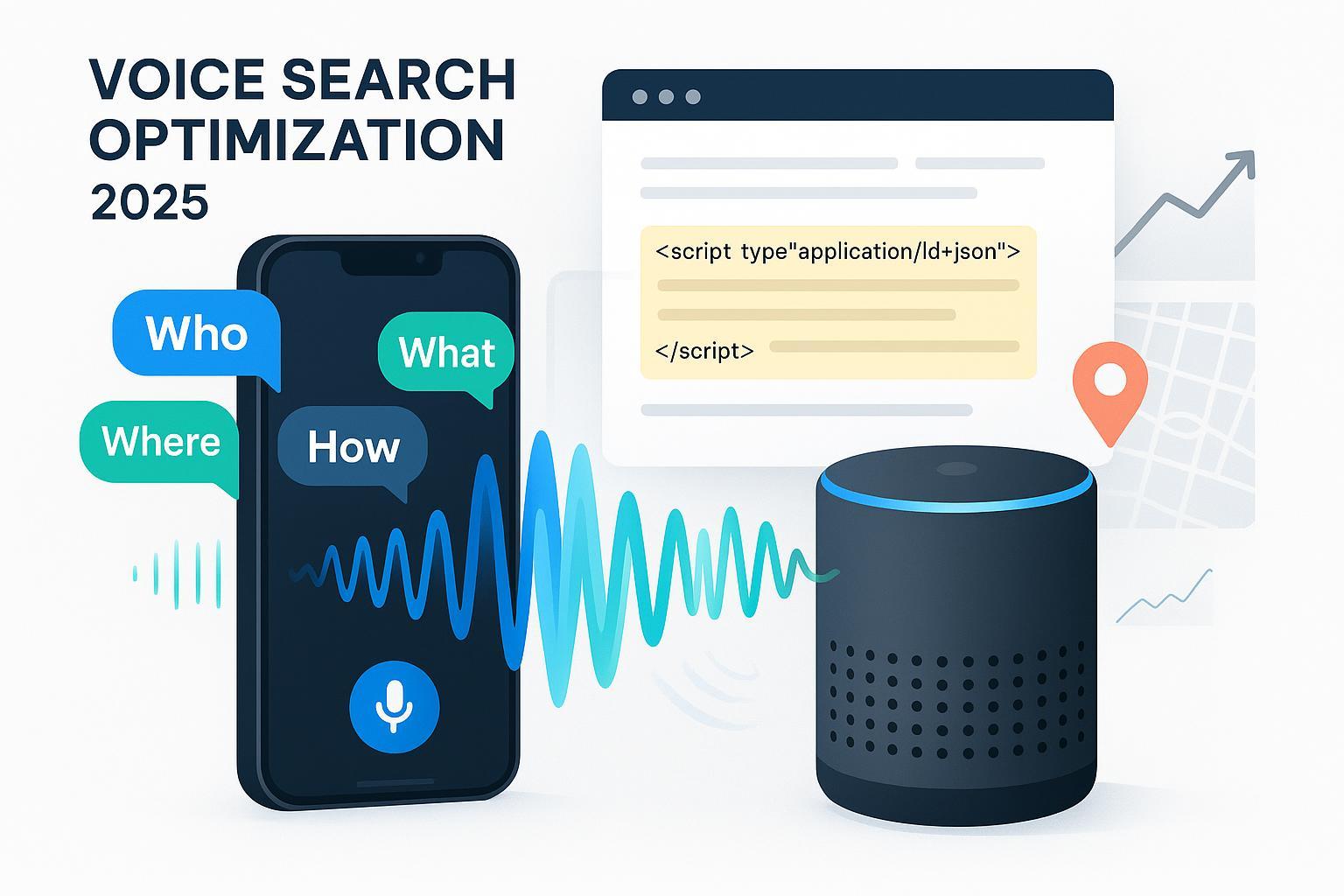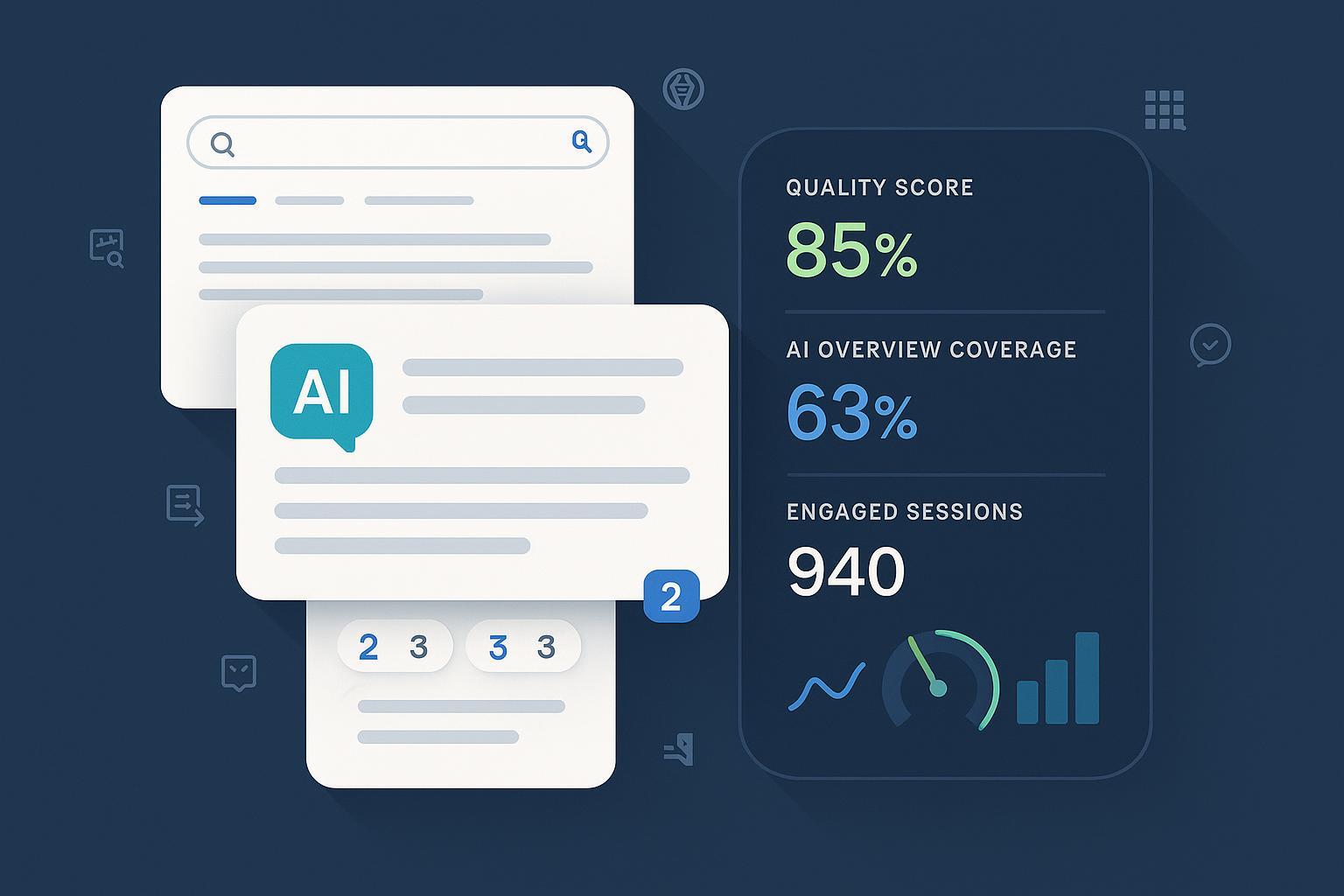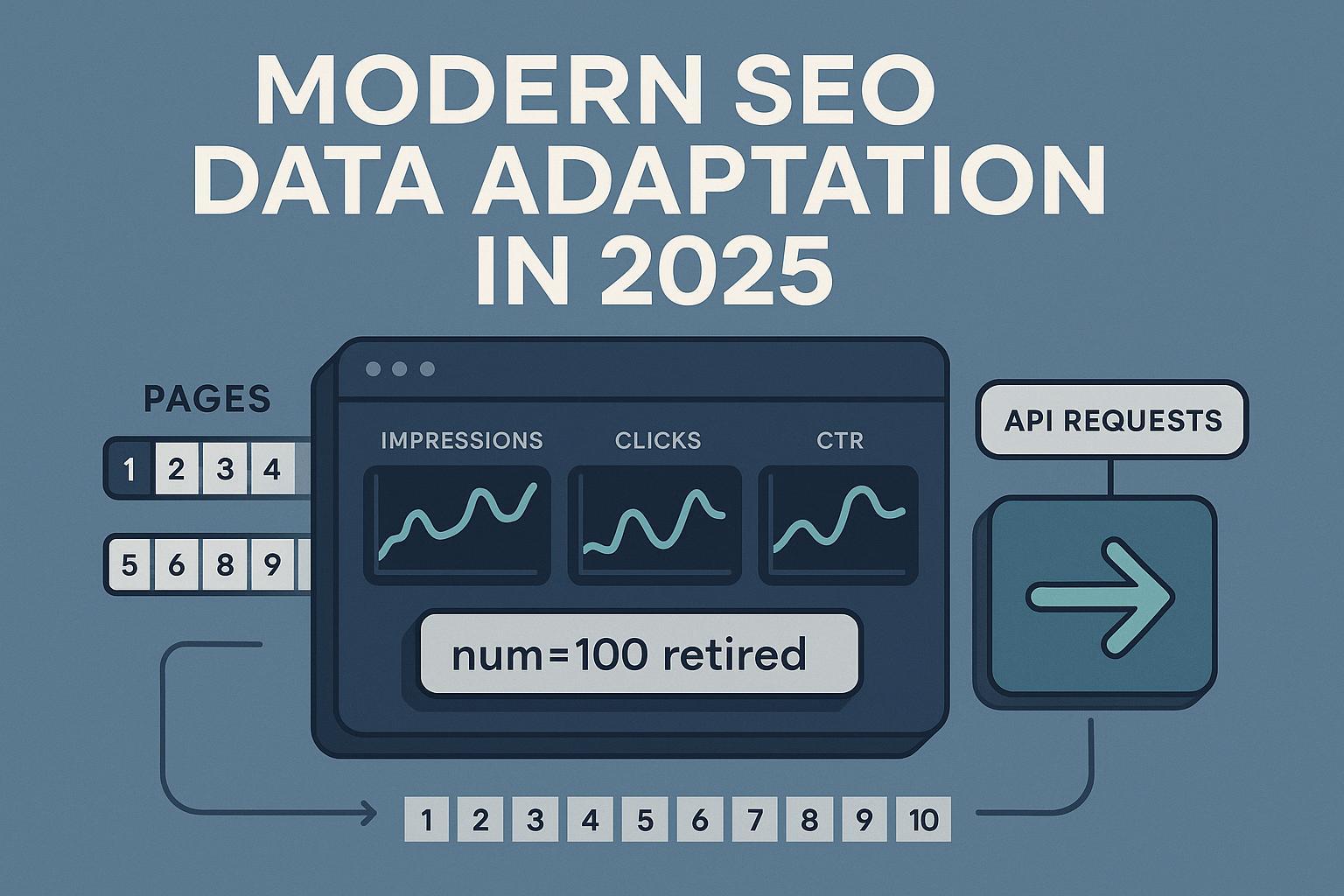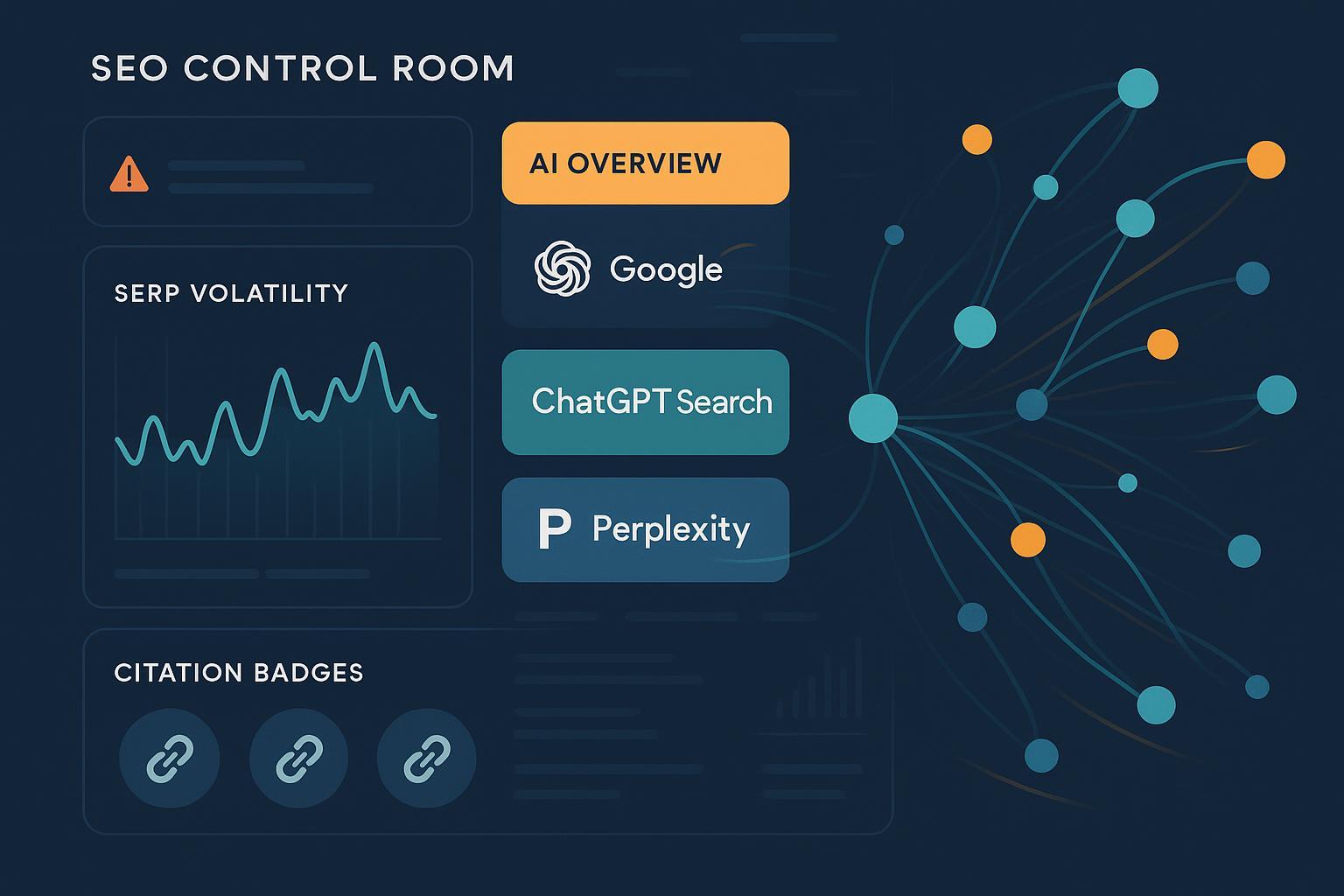Voice Search Optimization Best Practices for Natural Language SEO in 2025
Discover 2025 best practices for voice search optimization: answer-first content, local SEO, schema markup, Core Web Vitals, and AI-driven measurement for natural language SEO.


Why voice search in 2025 requires a different playbook
In 2025, voice-led and AI-generated answers sit atop a growing share of queries, especially on mobile. Voice queries skew longer, more conversational, and often local. Meanwhile, Google’s AI Overviews condense answers at the top of the SERP, so winning visibility demands concise, answer-first content, robust structured data, and mobile performance that meets Core Web Vitals. Google’s own rollout confirms this shift toward generative summaries in Search in 2024–2025, as outlined in Google’s generative AI announcement (2024).
How voice queries differ (and how to write for them)
What I’ve consistently seen across sites is that voice queries:
- Use question words (who/what/where/when/why/how) and modal verbs (can/should/does/is)
- Are longer and more natural-sounding (8+ words is common)
- Carry strong local and intent signals (“near me,” “open now,” “best [service] in [neighborhood]”)
Practical writing moves that work:
- Lead with a direct answer: a 40–60 word, plain-language paragraph that fully answers the question before details. This is the most reusable format for snippets and AI Overviews.
- Mirror the query in H2/H3 subheadings. Use natural phrasing instead of keyword stuffing.
- Add a short ordered list for tasks and a bulleted list for pros/cons to help summarization.
- Keep paragraphs tight (2–4 sentences); voice assistants read better when structure is simple.
Example pattern:
- H2: “How do I choose a family dentist in Austin?”
- First paragraph (40–60 words): a concise, complete answer
- Then: a 3–5 step checklist; a quick list of criteria; internal links to deeper resources where necessary
This answer-first style also increases your odds of being used in generative summaries, a trend discussed in CMSWire’s analysis of AI Overviews (2024).
Local SEO that maps to voice: “near me” done right
Local intent dominates voice. The businesses I’ve seen win consistently do the following well:
- Nail the basics in Google Business Profile (GBP)
- Set precise primary and secondary categories; fill services with natural, query-mirroring phrasing.
- Keep hours (including special hours) updated; post photos and regular updates.
- Ask for and respond to reviews using specific service and location descriptors.
- Keep NAP consistent across the site and key directories
- Exact matches for name, address, and phone; include neighborhood descriptors where relevant.
- Add hyperlocal copy and structured data
- Create location pages with answer-first sections for top questions (“Do you offer weekend appointments in [area]?”) and embed practical details like parking and transit.
- Implement LocalBusiness schema (details below) to reinforce entity and location.
GBP hygiene plus hyperlocal pages correlates with increases in local pack visibility and calls. I monitor calls and direction requests via GBP Insights, then adjust on-page phrasing and services.
Structured data in 2025: what still matters and what changed
Structured data helps machines reliably understand and summarize your content. But the rich results landscape has changed:
- Google restricted FAQ and HowTo rich results starting August 2023, with visibility much narrower now; HowTo is effectively deprecated in most contexts. See Google’s HowTo/FAQ changes (2023).
- Speakable structured data remains BETA and is most relevant for newsy content that Google Assistant can read aloud. Details in Google’s Speakable documentation (BETA).
What to implement and why:
- Organization: reinforce your brand entity with logo, contact, sameAs profiles.
- LocalBusiness (if brick-and-mortar or service-area): surface address, hours, geo, and services.
- Product/Offer/Review (retail/ecommerce): aid price/availability understanding.
- Article/VideoObject: help identify content type; useful for answer extraction.
- FAQPage: only when genuine FAQs exist; set expectations about rich result limits.
Validate with Google’s Rich Results Test and the Schema.org validator. Keep JSON-LD in sync with visible page content and your business facts.
Sample Organization schema (JSON-LD):
{
"@context": "https://schema.org",
"@type": "Organization",
"name": "Acme Dental Group",
"url": "https://www.acmedental.com",
"logo": "https://www.acmedental.com/logo.png",
"contactPoint": [{
"@type": "ContactPoint",
"telephone": "+1-512-555-0199",
"contactType": "customer service",
"areaServed": "US"
}],
"sameAs": [
"https://www.wikidata.org/wiki/QXXXXXX",
"https://www.linkedin.com/company/acme-dental-group/",
"https://x.com/acmedental"
]
}
Pro tip: Align names and profiles across the web to strengthen entity signals. This helps AI systems connect your brand to topics and locations.
Mobile performance: Core Web Vitals as your floor, not ceiling
For voice-led, mobile-first behavior, slow or jumpy pages kill visibility and assistant usage. As of March 2024, INP replaced FID in Core Web Vitals. Aim for the thresholds Google documents at the 75th percentile across mobile traffic:
- LCP ≤ 2.5s
- CLS < 0.1
- INP < 200ms
See Google’s overview of Core Web Vitals (updated 2024–2025) and the INP change on web.dev’s announcement (2024).
Tactics that consistently move the needle:
- Serve AVIF/WebP images; precompute responsive sizes; lazy-load below the fold.
- Inline critical CSS; defer non-critical scripts; audit third-party tags quarterly.
- Use
content-visibilityandcontain-intrinsic-sizefor below-the-fold containers. - Reduce main-thread work; code-split routes and hydrate only what’s interactive.
- Optimize font loading with
font-display: swapand limit custom font weights.
Earning featured snippets and direct answers (without gaming it)
Featured snippets still drive discovery for question queries, and AI Overviews often cite or paraphrase them. What’s worked for me:
- Put the 40–60 word answer immediately under the question-aligned H2/H3.
- Follow with a clean list or table that summarizes steps, criteria, or comparisons.
- Avoid waffle; assistants prefer unambiguous phrasing over sales language.
- Use straightforward markup (H2/H3, lists, tables); keep reading order logical.
Common pitfalls:
- Overusing FAQs when no real questions exist (hurts credibility; won’t restore lost rich results).
- Writing vague answers that dodge specifics like prices, timeframes, or steps.
Measurement and iteration: how to track voice-like intent and AI visibility
There’s no official “voice search” traffic metric. But you can measure proxies that correlate strongly with voice behavior and answer selection.
- Segment question and conversational queries in Google Search Console
- Use query regex filters to isolate question words and longer phrases. A practical starting set, inspired by standard RE2 usage in GSC, is outlined by RankMath’s GSC regex guide (2024):
(?i)^(who|what|when|where|why|how|does|is|can|should)\b
- For long-tail (8+ words):
^(\S+\s+){7,}\S+$
- For local intent (simple approximation):
(?i)\bnear me|in [a-z]+|open now|closest|best\b
Export these segments monthly to track impressions, CTR, and average position deltas after content updates.
- Track featured snippet ownership and volatility
- Combine GSC data with your rank tracker to monitor snippet wins for target questions. Expect volatility—especially after content rewrites.
- Use GBP Insights for local actions
- Calls, direction requests, and local impressions are the most reliable behavioral signals for “near me” success.
- Monitor AI Overviews and assistant citations across platforms
- Track whether your pages and brand are being cited or summarized in Google AI Overviews and assistant responses. Correlate citations to content updates.
First, for cross-platform monitoring of AI-generated answers and brand mentions, I use Geneo to track citations across ChatGPT, Perplexity, and Google AI Overviews, and to review sentiment and history so we can iterate content accordingly. Disclosure: Geneo is our product.
To deepen your playbook for earning citations in AI answers, you can also study tactics in our post on Reddit communities that influence AI search citations, then test and annotate outcomes alongside your GSC segments.
Advanced tactics: entity SEO and E-E-A-T alignment
Entity clarity increases your odds of being cited in AI Overviews and voice responses. My baseline process:
- Complete Organization schema with accurate name, URL, logo,
contactPoint, andsameAsto authoritative profiles (Wikidata, Wikipedia when applicable, and official social profiles). - Keep naming conventions consistent across your site, GBP, social, and directories.
- Build topical clusters with internal linking that mirrors how users ask questions; concentrate depth on core entities and intents.
- Reinforce E-E-A-T with clear author bios, specific experience statements, and inline citations to original sources.
As a reminder of the broader context, Google has continued to emphasize E-E-A-T and entity understanding through 2024–2025; industry roundups have covered this evolution, such as Search Engine Land’s 2024 coverage of E-E-A-T and Knowledge Graph focus.
Accessibility and conversational UX: good for users, good for voice
Many voice interactions route to on-page reading and actions. Accessibility improvements make that handoff smoother and support SEO.
- Meet WCAG 2.1 AA minimums and begin adopting WCAG 2.2 criteria (target sizes, focus not obscured). The legal context for public-sector properties tightened with the U.S. DOJ’s Title II rule in 2024; see the DOJ fact sheet (2024) and the W3C’s WCAG 2.1 specification.
- Practical checks: keyboard operability for nav and forms; clear labels and instructions; logical heading order; alt text that’s actually descriptive. These also help screen readers and voice control software.
Common pitfalls and how to avoid them
- Expecting FAQ/HowTo markup to restore rich results: After Google’s changes, most sites won’t see the old FAQ/HowTo visuals, even with perfect markup. Keep schema for understanding, not for guaranteed rich cards.
- Over-creating thin location pages: Without unique value (local photos, staff bios, services, reviews), these pages stall. Add genuine local context and Q&A.
- Ignoring mobile interaction latency (INP): You can hit LCP and still frustrate users with slow taps. Audit INP and minimize render-blocking scripts.
- Writing around the question: If users ask prices, give a range and the variables. If they ask steps, list them. Ambiguity rarely wins snippets.
Implementation checklist you can run this month
Week 1: Content and structure
- Identify 10–20 top question queries; rewrite those pages with answer-first 40–60 word blocks and clean H2/H3 structure.
- Add 1–2 succinct lists or tables per question to aid summarization.
Week 2: Local and entity foundations
- Refresh GBP categories, services, hours, and photos; request 5–10 fresh reviews.
- Implement or update Organization and (if relevant) LocalBusiness schema; validate with Rich Results Test and Schema.org Validator.
Week 3: Performance tuning
- Compress and resize images to AVIF/WebP; inline critical CSS; defer non-critical JS; audit third-party scripts.
- Re-test Core Web Vitals on mobile; target LCP ≤2.5s, CLS <0.1, INP <200ms.
Week 4: Measurement and iteration
- Apply GSC regex filters for question/long-tail/local segments; export baselines.
- Tag target questions in your rank tracker for snippet monitoring.
- Review GBP Insights for calls and direction requests; annotate changes.
- Start monitoring AI Overview citations and assistant mentions; correlate to content updates and outreach.
Optional: Explore the broader AI monitoring tool landscape if you’re building an internal practice and want to compare capabilities to your stack; we’ve written an overview of one such tool with alternatives in our Profound review and alternatives (2025).
Lessons learned from the field
- Answer-first pays off faster than giant rewrites: We’ve repeatedly seen pages pick up question impressions and occasional snippets within weeks after adding a clear 40–60 word answer block and a short list.
- Local trust is compounding: Fresh reviews using natural language (“same-day crown in East Austin”) often coincide with “near me” gains and higher call volume.
- Schema is a support act, not the star: Post-2023, FAQ/HowTo visuals won’t rescue thin pages. The win is in unambiguous content, correct entities, and performance.
- Measurement needs proxies: Treat GSC regex segments, snippet wins, GBP actions, and AI Overview citations as a composite scorecard. Iteration beats one-time pushes.
Reference points and further reading
- Google’s generative AI in Search announcement (2024): Generative AI in Google Search
- Google’s HowTo/FAQ changes (2023): Changes to HowTo and FAQ rich results
- Speakable structured data (BETA): Speakable markup
- Core Web Vitals overview (2024–2025): Core Web Vitals
- INP becomes a Core Web Vital (2024): INP announcement on web.dev
- Regex filtering in GSC (2024): Regex in Google Search Console
- DOJ Title II web accessibility rule (2024): ADA Title II web rule factsheet
- WCAG 2.1 specification: W3C WCAG 2.1
- AI Overviews practitioner context (2024): AI Overviews and SEO analysis
If you apply the workflow above—answer-first content, local/entity reinforcement, schema for understanding, performance tuning, and measurement via GSC/GBP/AI citations—you’ll see clearer signals within 30–60 days and compounding gains as you iterate. In 2025’s generative and voice-first landscape, the teams that measure and adapt fastest win the most real estate above the fold.




